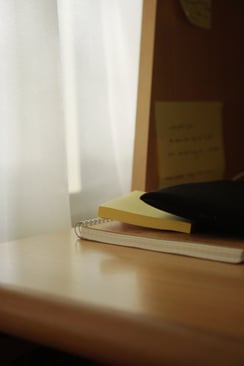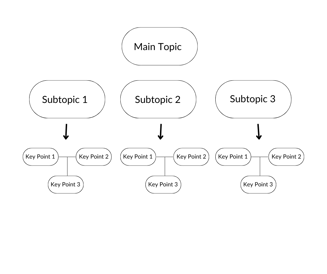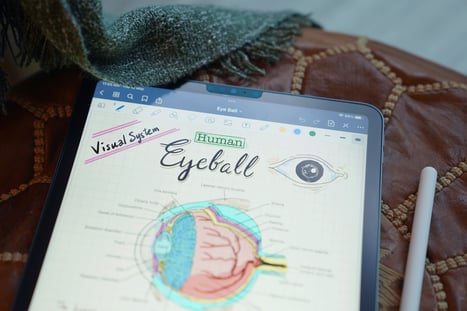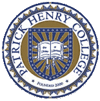.png?width=714&height=357&name=Julia_Notetaking(1).png)
A new school year is approaching. You have brand new books and school supplies. Everything is new and exciting. If you are like me, you might want to refresh the way to take notes or study for exams this year. There’s always room for improvement!
But first, what is note-taking?
Is it just scribbling down what stands out to you most? Is it writing down whatever the professor puts on the whiteboard? Is it writing down what is on the professor’s slideshow? In many ways, it’s all three. There is some method to the madness, though. First, we need a conceptual definition. Note-taking is a way for us to process the information we are receiving in a given amount of time.
When you are in the lecture, there are several things you should write down. If the professor repeats something, write it down. If your professor says something like “This is really important” or jokes about it being on the exam, write it down. If your professor writes something on the whiteboard, write it down. If something stands out to you, write it down. If you want to look up something in your textbook or on the internet later, write it down and place a star by it to remember later.
Note: At PHC, all freshmen and sophomore classes do not allow devices in the classroom for note-taking, unless it is explicitly stated in the syllabus or there is an exception. If you aren’t used to taking handwritten notes, take some time over the summer to practice!
After the lecture is over, either the same day or the next day, review your notes and make a summary page to refer back to for the exam. This could be within the same notebook, on individual pieces of paper, or even in electronic form. This could be as simple as rearranging the information in a way that makes the most sense to you or using colors and images to help make your notes more exciting.
.png?width=714&height=714&name=NOTE%20TAKING%20(1).png)
Supplies
It may seem simple, but finding a type of paper you like and a pen or pencil that makes writing easier will improve your note-taking skills overall. You’ll find yourself motivated to write more in class.
You might consider having multiple colored pens, sticky notes, and a pencil sharpener with you in class. Highlighters are also a good idea to have on hand. If you like your notes to look clean, bring some white-out with you to be able to make corrections.
What is your learning style?
Before we get into the different types of note-taking, you might want to figure out what type of learner you are. (You can find quizzes online to find out!)
There are three types of learning styles: visual, auditory, and kinesthetic.
If you are a visual learner, you like to write things out on a whiteboard, visually see how things connect, and tend to remember things better if you see or read them. You might be able to look at a textbook and memorize a page, recall it during the exam, and know exactly where that information was located on it.
If you are an auditory learner, you remember best by hearing someone else tell you the information or by talking yourself through it. You remember book plots better when you listen to them.
If you are a kinesthetic learner, you prefer to do something physically while studying, actively participating in a lecture, and remember things better when there is an action associated with it. You might find yourself doodling while listening to a lecture or finding something to do with your hands.
Some people are dominantly one of these types, others are a mixture of both. Once you can identify which one you are, it will help you know which note-taking and study methods are best for you!
Note Taking Methods
Now that we’ve established what note-taking is and what type of learner you are, let’s look at some of the different styles of note-taking.
Cornell Method
This is a method with which you are probably familiar. You take a single sheet of paper and write the title of the lecture on the top. Divide your paper into thirds horizontally by drawing lines. Then section off a third of the paper vertically to create a box to write your core questions. While in class, you write down your main takeaways. After class, you will .png?width=364&height=306&name=Social%20Content%20Julia%20(1).png) fill out the core question section corresponding to the information beside it. For example, if your U.S. History class is studying the beginning of the War for Independence and you have information regarding the historical context of the Declaration of Independence (DoI) on the right-hand side, you might write the question “What was happening when the DoI was written?”
fill out the core question section corresponding to the information beside it. For example, if your U.S. History class is studying the beginning of the War for Independence and you have information regarding the historical context of the Declaration of Independence (DoI) on the right-hand side, you might write the question “What was happening when the DoI was written?”
Mind Mapping Method
This note-taking method is extremely helpful for those who are visual learners. To begin, you have to identify the main idea, which is typically the overall topic of the lecture. Then, you draw a connector (an arrow, a line, etc.) and write down a subtopic.  Underneath each subtopic, you can write as many key points as you want! This method could be done in the classroom but might be more helpful to do when you are reviewing your notes. If you prefer digital notes, there are apps that have mind map templates. Of course, you can also create it from scratch with pen and paper!
Underneath each subtopic, you can write as many key points as you want! This method could be done in the classroom but might be more helpful to do when you are reviewing your notes. If you prefer digital notes, there are apps that have mind map templates. Of course, you can also create it from scratch with pen and paper!
Outline Method
You may be familiar with this one! With this method, you will create an outline of the lecture, writing down the main topics, sub-points, and examples that the professor gives. You can get creative with how you signify each of these sections by colors, arrows, stars, etc. It can be challenging to do this style in class, since a professor may say something that you want to put under a different heading, but you don’t have room. If that’s the case, it is always helpful to have sticky notes with you, that way the information is where you want it, but it doesn’t look messy.
Question Method
If you do not want to write a lot in class, try the question method! Instead of writing down all the information, formulate a question that will trigger your memory. For example, if you are studying Nietzsche’s Basic Writing you might write the question, “What was the main point of Nietzsche’s Parable of the Madman?”
Study Methods
Now that we have our notes, let’s talk about how to use them to study for an upcoming test. If you choose the Cornell Method or the Question Method, use the core questions you wrote down to trigger your memory. You can even copy your question onto flashcards and write the answer on the other side. If you chose the Mind Mapping Method, review your notes and then talk yourself through the flow of ideas, or rewrite it from memory. If you use the Outline Method, review it, and then write it out again or verbally talk through it.
Here’s where the learning styles come in handy. If you are a visual learner, creating aesthetic study guides can be helpful. With certain subjects like science or history, you can add pictures to your notes to help bring the facts to life.  If you have access to a whiteboard or some sort of tablet, you can write the information you need to remember in creative ways. This method, called the White-Boarding Method, is very helpful for kinesthetic learners as well. Goodnotes and Notability are great apps for digital note-taking!
If you have access to a whiteboard or some sort of tablet, you can write the information you need to remember in creative ways. This method, called the White-Boarding Method, is very helpful for kinesthetic learners as well. Goodnotes and Notability are great apps for digital note-taking!
If you are an auditory learner, find a friend or simply talk yourself through the information from memory. This will help you realize what you do and do not know. If your notes are in a Word Document, you can have the app read your notes back to you.
If you are a kinesthetic learner, it might help to walk outside or somewhere indoors as you review your notes.
Do you have trouble focusing while studying? Click here!
PHC-Specific Study Tips
Now for some PHC-specific study tips. Each class offers a different type of information to memorize, but there are some tips that apply to all subjects.
PHC Study Guides
Find someone who is a member of the PHC Study Guides Facebook group and ask them to add you. Here, you can access study guides from previous years, ask questions of upperclassmen, and post your own study guides or Quizlet sets for others to use. These study guides may not always be correct, so check with your professor before you use any of them!
Talk with your professors
Scheduling a meeting with a professor to discuss how to study for their exams is the best way to successfully complete an exam. Simply asking them how they would study for their own exam and following that method will help you perform better. (Take it from someone who did just that!) Some professors create their own study guides or question banks that address all the material that could be on the exam. When in doubt, just ask your professor!
Study in groups
Sometimes it is helpful to find a group of peers to study with for an exam. Everyone has different note-taking and study methods, and they might have a better grasp of a subject than you do. Working together is always helpful, plus it helps build community and holds people accountable. Unless a professor specifically says otherwise, all the classes have studied the same material in the same week, so a weekly study group is possible to do as well!
Focus on the subjects you know you need to study more
This seems simple, but in the crunch of midterms and finals, it is helpful to distinguish what classes need more attention than others. This does not mean that you neglect other subjects, but simply dedicate more time to others. For example, if you are struggling in U.S. History and Euclidean Geometry, you might spend an hour studying for your other classes and dedicate two hours to each of the more challenging classes.
Go to the Student Support Center
If you are having trouble understanding a subject at 7pm at night after the professor has gone home, stop by the Student Support Center for help! They are available Mondays, Tuesdays, and Thursdays from 7-10pm in the Library Study Center.
Talk to upperclassmen
Since everyone goes through the same 63-credit core curriculum, you can ask upperclassmen for tips on how to study for an upcoming exam. Prior to any major assignment, paper, or exam, reach out to a couple of upperclassmen to get their tips on how to write for a specific professor, how to study for a specific exam, and which study guides to use.
You might have to try several of these methods to discover what works best for you. Just as learning is a process, so too is discovering how you study!
----------
Learn how PHC stands apart from other Christian liberal arts programs.
Patrick Henry College exists to glorify God by challenging the status quo in higher education, lifting high both faith and reason within a rigorous academic environment; thereby preserving for posterity the ideals behind the "noble experiment in ordered liberty" that is the foundation of America.







